When planning our weekend in Beijing, one day obviously had to revolve around a visit to the famous Great Wall of China. Once thought to be visible from space, the wall is a feat of engineering and one of China’s premiere tourist attractions. We prepared ourselves for the crowds and set off for our adventure.
After feedback from friends, we headed the section of wall at Mutianyu, about 90 kilometers north of Beijing, which is reportedly less crowded than the closer section at Badaling. We took a local bus that had five seats across and zero other foreigners. Our knowledge of Mandarin came in very helpful as we had to ask the other passengers where to get off the bus; stops weren’t marked or announced.
After exiting the bus on the side of the highway, there was nary a sign and we weren’t sure what to do next. A few locals hanging around the bus stop, eager for fares from clueless tourists, began calling out to us. Eventually we got into the private car of a nice lady who offered to drive us the rest of the way to the wall (30 minutes), wait while we visited the site and drive us back to the bus stop for 160 RMB. She even stopped at a convenience store on the way so we could stock up on water. Though from the way she bragged about the price to the other drivers, we’re pretty sure we overpaid.
Once we got our tickets to the Great Wall at the park’s entrance, we took a lengthy “cable car” ride to the top of the mountain. This very generously named ride was more like a ski lift with a security bar that didn’t lock. We held on tight and tried to enjoy the view.
The Great Wall was originally built over 2,000 years ago during the reign of China’s first emperor, Qin Shi Huang (who is also responsible for creating the Terracotta Army). The wall was a defensive structure meant to protect the newly unified China, though it failed to keep out both the conquering Mongols and the Manchus.
Thanks to erosion and pilfering villagers in need of building materials, many parts of the wall have crumbled into ruin. But the enterprising Ming rebuilt many sections, including that of Mutianyu. The stone watchtowers are especially striking, though were hard to make out through the haze of pollution. At least it wasn’t as crowded as we were expecting.
After climbing up and down the steep stairs for about an hour and a half, we were ready to go back down and meet our driver. But rather than take the cable car, we opted for the much faster toboggan ride. We zipped down the mountain while announcements in Chinese and English told us to “slow down, but don’t stop.” The exit is right by a shopping street so we were able to pick up an obligatory “I climbed the Great Wall” t-shirt before finding our lady and heading back to town, exhausted and exhilarated.
Is the Great Wall of China on your bucket list?
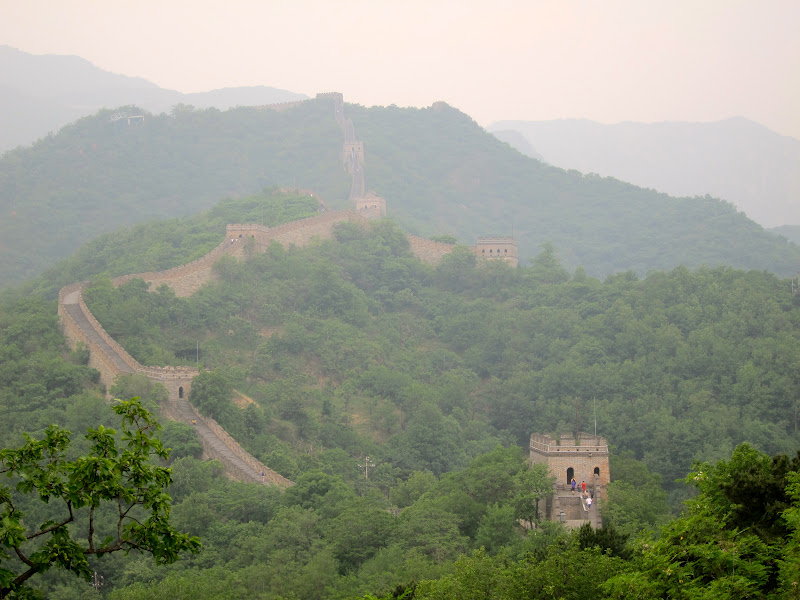
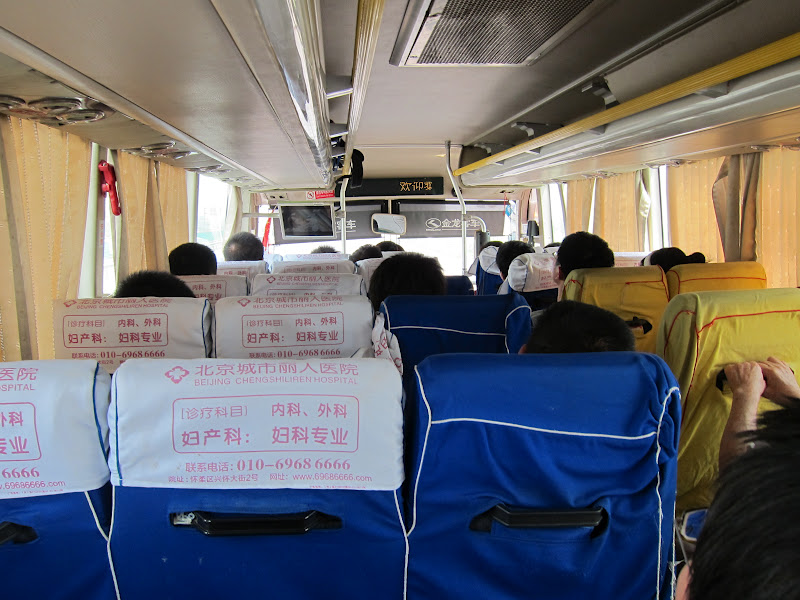
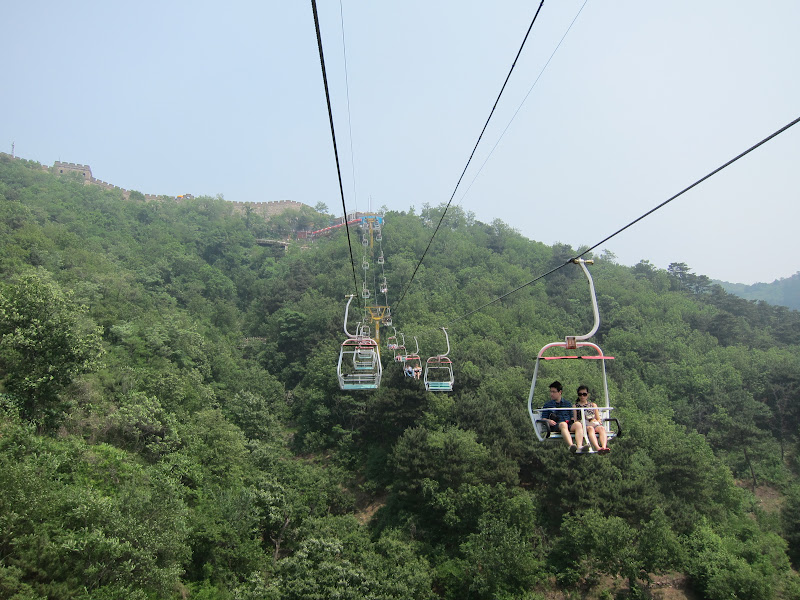
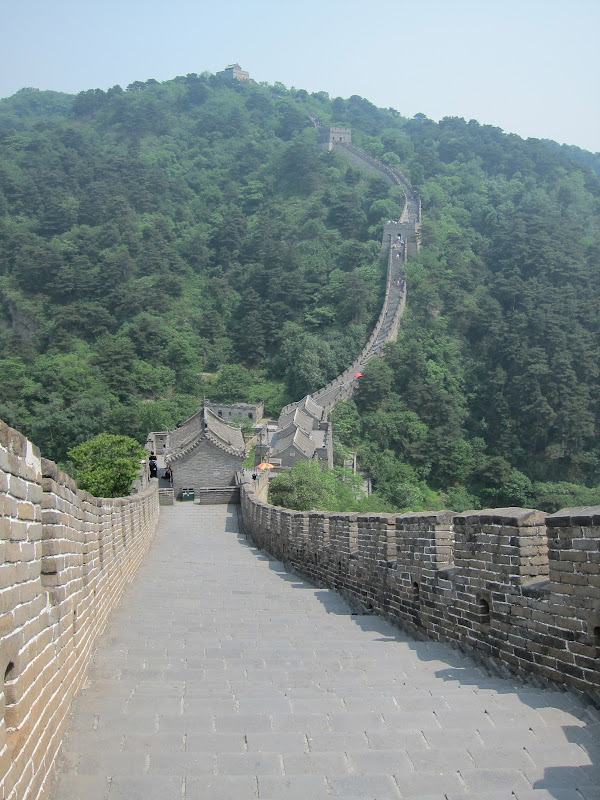
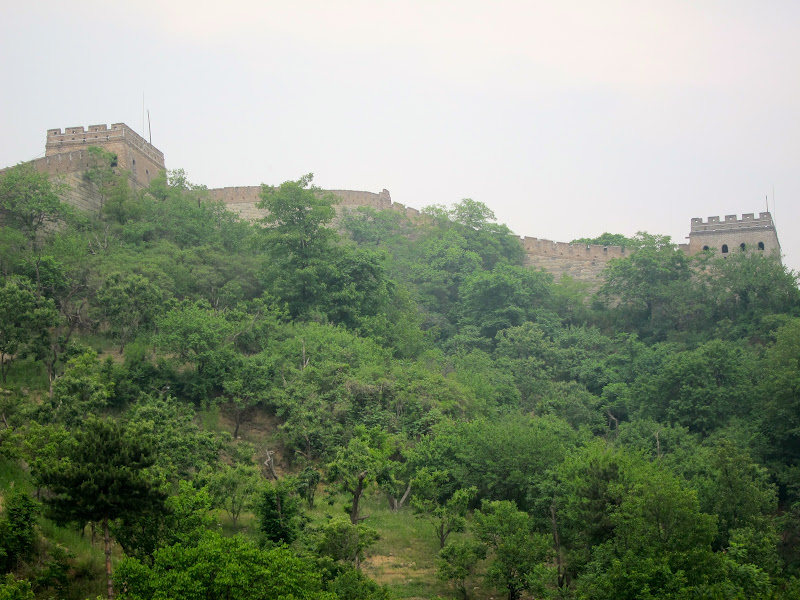
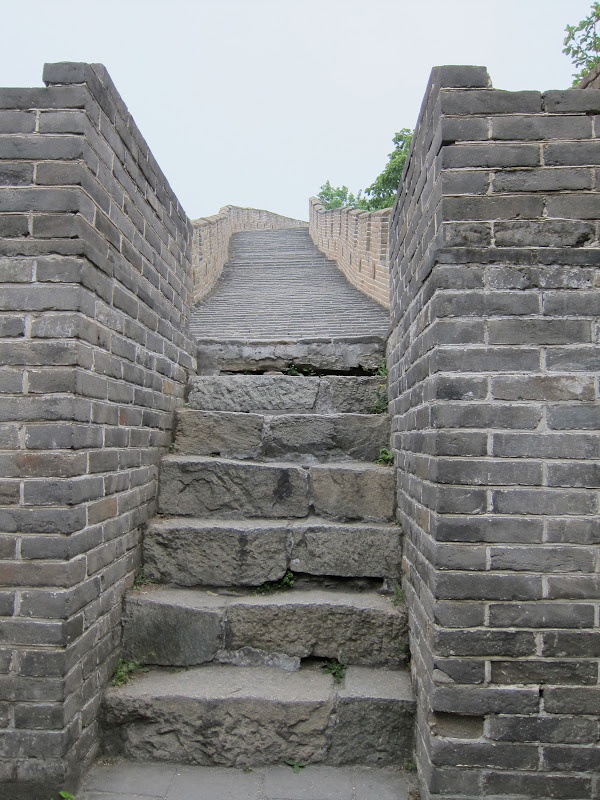
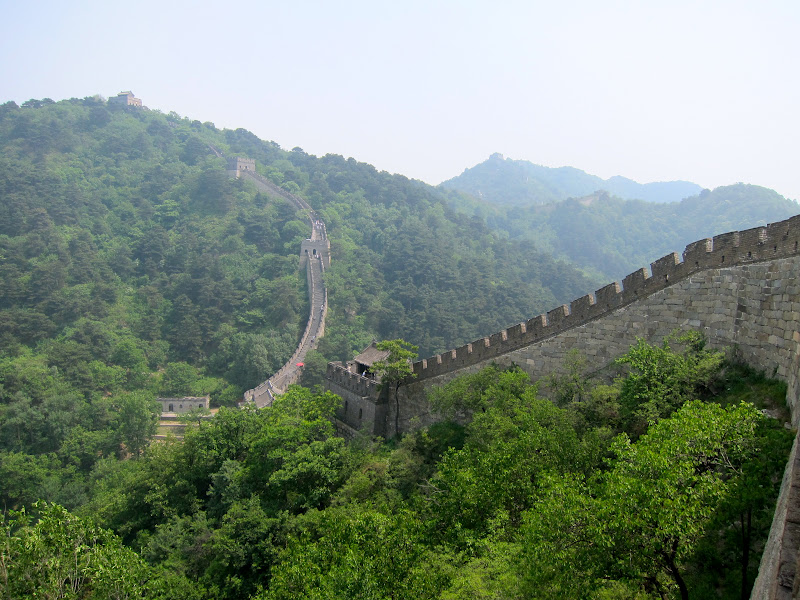
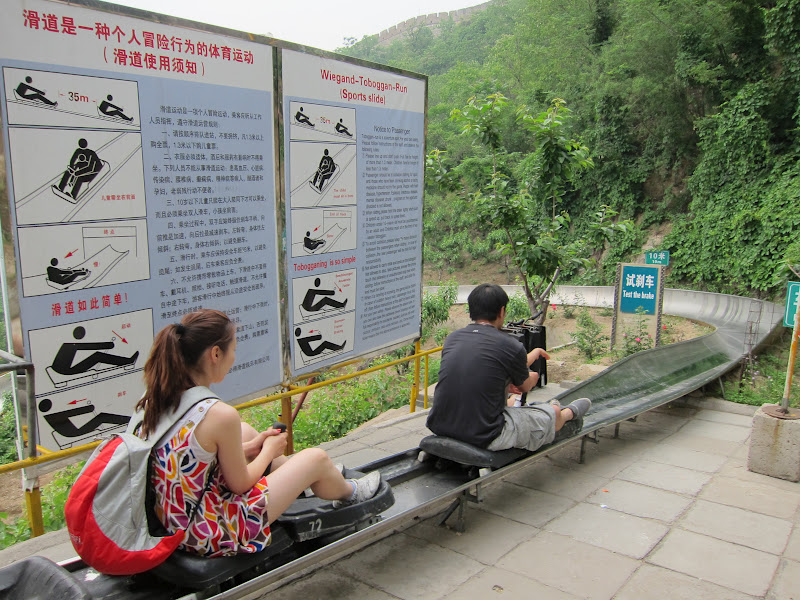
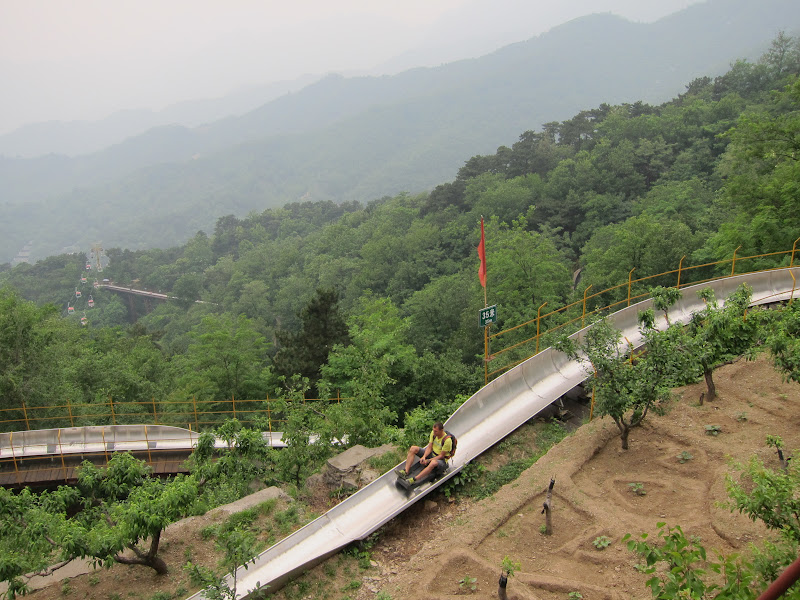
I was hyperentilating a little when you got to the cable cars with malfunctioning (or early design) security bar. Boy, *someone* is really stretching his wings lately!!
That toboggan exit is novel.
Nice shots!
I think he was too, but after the initial shock he was fine. I think the UNESCO designation gave him more confidence since they probably inspect things for safety and accessibility. Having been skiing a few times, I was more comfortable. But we both loved the toboggan ride. If only they would install one in Leshan!
I can’t get over the grandness of the great wall. All built by hand so many years ago. I would love to see it, but know I couldn’t do all the stairs. The toboggan ride looked like fun. How fast did it get up too? Did you scream like a girl? Mom
This comment has been removed by the author.
It was really impressive! We’ve been told that there is another section that is a little flatter so we could think about taking you there on your next visit. You just have to figure out what you most want to see. The toboggan ride was a lot of fun, especially going around the turns, but it didn’t go very fast. You couldn’t hit the person in front of you.